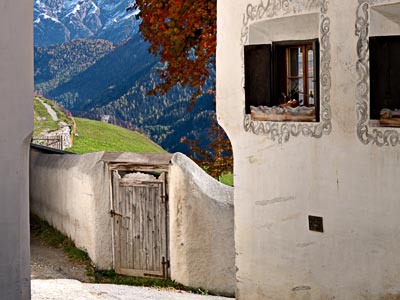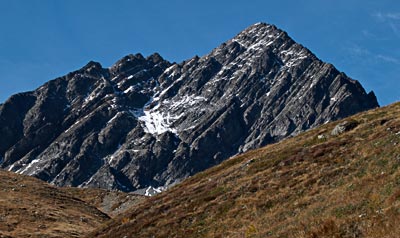Revisiting the past
Before...

...and After

The British research ship RRS John Biscoe near Damoy hut.



The British research ship RRS John Biscoe near Damoy hut.

 It isn't particularly easy to use at first. Obviously, it has to be used in full manual mode. Focus is achieved by compressing and holding the tube, usually easier said than done. With a viewfinder of lesser quality than the Olympus E-1, it could get very difficult - probably it is much easier with a 35mm camera. At maximum aperture (f2.0) the depth of field is very shallow, making it even harder. And yes, you can change the aperture, by the ingeniously simple method of snapping on a series of magnetically fixed masks.
Although it is easy to go overboard with the Lensbaby, forgetting that any creative tool, including this one, should not control you rather than you control it, it is both fun and rewarding. To see some really creative uses of a Lensbaby, look here.
It isn't particularly easy to use at first. Obviously, it has to be used in full manual mode. Focus is achieved by compressing and holding the tube, usually easier said than done. With a viewfinder of lesser quality than the Olympus E-1, it could get very difficult - probably it is much easier with a 35mm camera. At maximum aperture (f2.0) the depth of field is very shallow, making it even harder. And yes, you can change the aperture, by the ingeniously simple method of snapping on a series of magnetically fixed masks.
Although it is easy to go overboard with the Lensbaby, forgetting that any creative tool, including this one, should not control you rather than you control it, it is both fun and rewarding. To see some really creative uses of a Lensbaby, look here.

 Zoos are undeniably a good place to practice wildlife photography. However today was challenging. Overcast and foggy, and late afternoon light, made conditions quite difficult. This photo was taken using the Olympus E-1 and the 50-200mm lens, wide open (f2.9), at 800 ISO and semi-supported by a monopod. Although you can't really judge here, it rather belies the accepted knowledge that the E-1 isn't much good at 800 ISO. Here, I've applied light noise reduction (colour noise in CaptureOne, luminance noise in Noise Ninja), and used PhotoKit Sharpener's Creative Sharpener to recover some detail in the panda's face (the photo was not perfectly sharp, but since I was at 1/90sec, semi hand-held, that is hardly surprising).
I do sometimes wonder how it would be to have a top end Canon, or even a Leica R9 digital, but then again, both are far heavier and bulkier that the E-1, and I'm not so sure that their best respective lenses are that much better than the mid range E-System ones.
Zoos are undeniably a good place to practice wildlife photography. However today was challenging. Overcast and foggy, and late afternoon light, made conditions quite difficult. This photo was taken using the Olympus E-1 and the 50-200mm lens, wide open (f2.9), at 800 ISO and semi-supported by a monopod. Although you can't really judge here, it rather belies the accepted knowledge that the E-1 isn't much good at 800 ISO. Here, I've applied light noise reduction (colour noise in CaptureOne, luminance noise in Noise Ninja), and used PhotoKit Sharpener's Creative Sharpener to recover some detail in the panda's face (the photo was not perfectly sharp, but since I was at 1/90sec, semi hand-held, that is hardly surprising).
I do sometimes wonder how it would be to have a top end Canon, or even a Leica R9 digital, but then again, both are far heavier and bulkier that the E-1, and I'm not so sure that their best respective lenses are that much better than the mid range E-System ones.


Guarda, detail
The isolation of the Lower Engadine has helped it to preserve its unique character. To me it is more reminiscent of Transylvania than Switzerland, with wonderfully preserved colorful vernacular architecture, and a fascinating history. The largest village, Scuol, famed for its thermal baths, has lost some charm through development, but other villages, such as Guarda, feel like being in another time altogether. When the weather is good, as it was for us, it is nearly magical. Isolation has also preserved the region's language, Rhaeto-Rumantsch, which, like Romanian, traces its root directly to Latin. This is not some quaint semi artificial language revived for tourists, but genuinely the native language of the region. Different dialects of Romantsch are also spoken in other areas of Graubunden. This is one of the things about Switzerland that keeps surprising me - such diversity over such a small area.

Piz Linard from Chamanna Linard hut We stayed in the village of Lavin, from where various hiking trails extend all over the mountains. We headed up towards Piz Linard, which we got close to, but eventually turned back. As well as being weighed down by far too much camera gear, I was suffering from bad back pains, as well as being hopelessly out of practice. But the beautiful weather, and the turning autumn leaves combined to create a wonderful atmosphere, and the effort was well worth it. The Lower Engadine is a great place for hiking, for nature photography, for relaxing and for just getting away from it all...all at the same time.


Gran Cafe, Zürich. Hasselblad Xpan, 45mm, Fujichrome 64T, 45 seconds at f11
I think the strange, ghostly "lensbaby" effect is due to a long exposure in heavy rain. It isn't out of focus, and the lens was not misted, or wet - I kept checking. In any case, I was a bit unexpected, but I'm pretty pleased with it. The few customers of the Gran Cafe, and the even fewer passers by, clearly thought I was crazy.